Recent Articles
Popular Makes
Body Types
10 Things You Need to Know About the 2018 Hyundai Accent
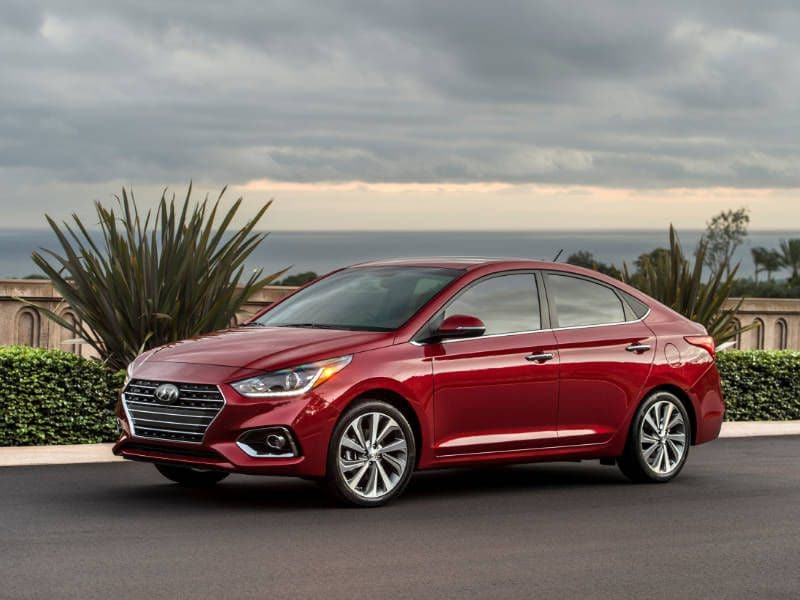
2018 Hyundai Accent Hero ・ Photo by Hyundai
Now on the threshold of its fifth generation, the Accent is Hyundai’s entry in the basic transportation game, competing with models that include the Honda Fit, Nissan Versa, Toyota Yaris and Ford Fiesta, among others. Although small crossovers have eclipsed subcompact cars on the sales charts, these small automobiles continue to improve in terms of sophistication and safety, and still score high marks with urbanites. How does the latest Accent stack up versus its many competitors? A preview drive event in the Las Vegas area gave us some insights.
1) The Accent looks a lot like the Sonata.
With its strong character line running from front to rear just below the beltline, and sculpted lower body creases connecting the front and rear wheel wells, the new Accent looks very much like a smaller edition of the mid-size Sonata sedan. This is not a bad thing. Like the Sonata, the Accent’s styling is conservative yet sophisticated. More important, it’s a look that takes the Accent visually out of its size class.
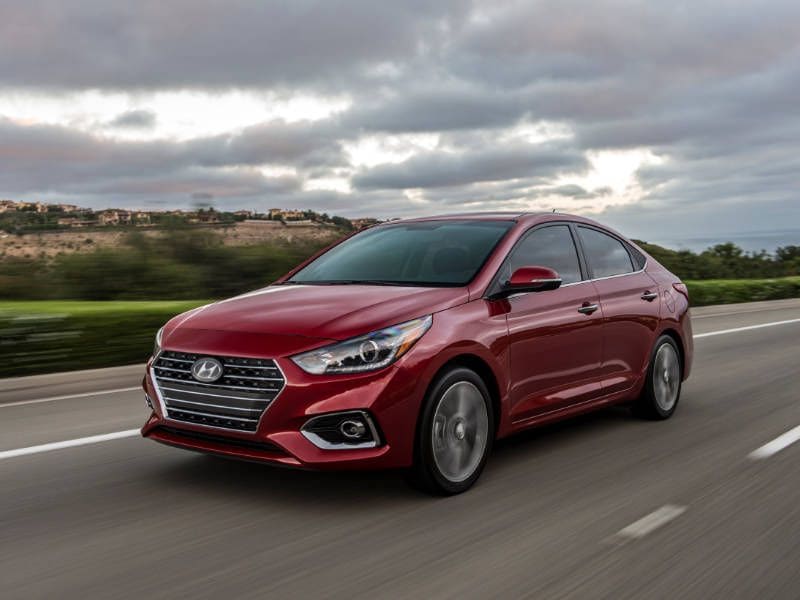
Photo by Hyundai
2) The Accent is a bigger subcompact sedan than before.
Like almost every new car that that rolls out of the gates these days, the next-generation Accent sedan is a little bigger than the version that preceded it. The wheelbase stretches almost a half-inch, to 101.6 inches, and the overall length grows correspondingly to 172.6 inches. But the most significant increase is lateral. At 68.1 inches, the new sedan is 1.2 inches wider than its predecessor.
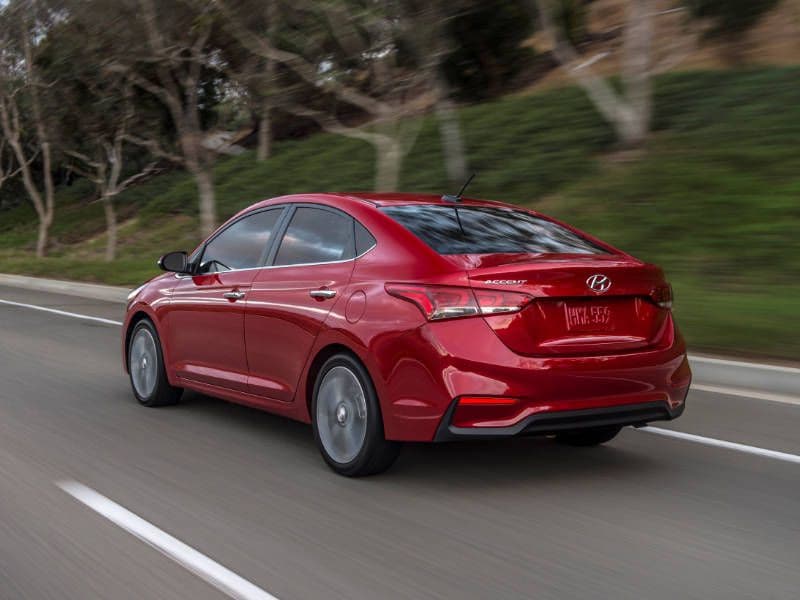
Photo by Hyundai
3) Its bigger size equates with more comfort.
The benefit of the 2018 Accent’s increased length is most readily discernible in the rear seat. Like most subcompacts, it’s still snug back there, but it’s possible to accommodate two adults with only a little compromise by those occupying the front seats. Like other small cars, the Accent is rated for five passengers, but its center position is suitable only for child seats — a trait that also applies to the leading competition. However, legroom notwithstanding, the more significant increase in width is easier to appreciate. There’s more elbow room and a sense of being in a slightly larger car — the difference between a subcompact and a compact, for example.
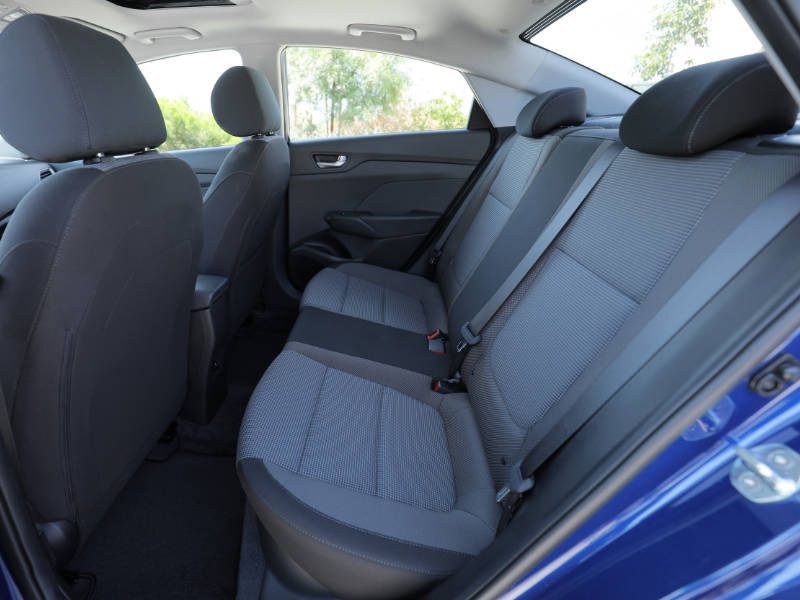
Photo by Hyundai
4) It's got a no-frills interior.
Beyond its expanded volume, the Accent’s interior qualifies as average in terms of subcompact competition. The cloth upholstery (there's no leather option) looks as though it will stand up to long-term abuse, and the seats are adequate in terms of comfort and adjustability. Instrumentation and controls are straightforward, and the infotainment and connectivity features that have come to be expected of all contemporary automobiles are available. On the other hand, there are substantial expanses of hard plastic, and in sum the interior looks just a little cheap compared to some others in this class.
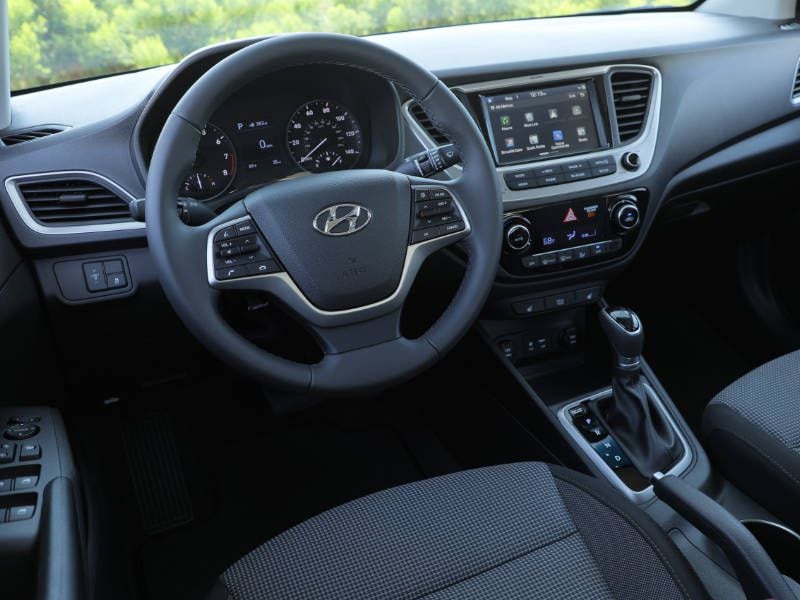
Photo by Hyundai
5) The hatchback variant has been discontinued.
Speaking of roominess, the redesigned Accent eliminates the hatchback variant offered in previous generations. The 2018 Accent is strictly a formal sedan. This is a curious decision. While America continues to prefer sedans to hatchbacks, the hatchback body style is far more useful in terms of versatility and is capable of swallowing far more cargo than the 13.7 cubic feet afforded by the new Accent sedan's trunk. Beyond that, many of the top entries in this class offer hatchback models, and the snappy little Honda Fit is hatchback-only.
Speculation: Although the hatchback accounted for a healthy 25 percent of Accent sales, it may have been scratched to make room for a small crossover suv — one of eight all-new or redesigned CUVs Hyundai plans to introduce by the 2020 model year.
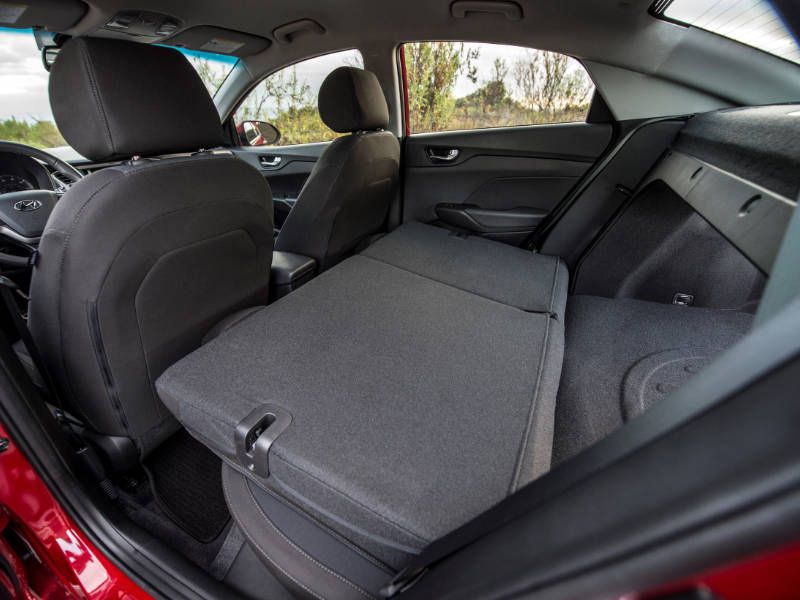
Photo by Hyundai
6) The Accent got a structural upgrade.
Chassis rigidity is the starting point for all vehicle dynamics. The stiffer the structure, the more latitude the chassis engineers have for tuning the suspension to the desired combination of ride and handling. It also contributes to crashworthiness. Thanks to its in-house steel production operations, Hyundai has relatively inexpensive access to high-strength steel, which it has lavished on the 2018 Accent. According to Hyundai, the result is a 32 percent increase in the car's chassis stiffness.
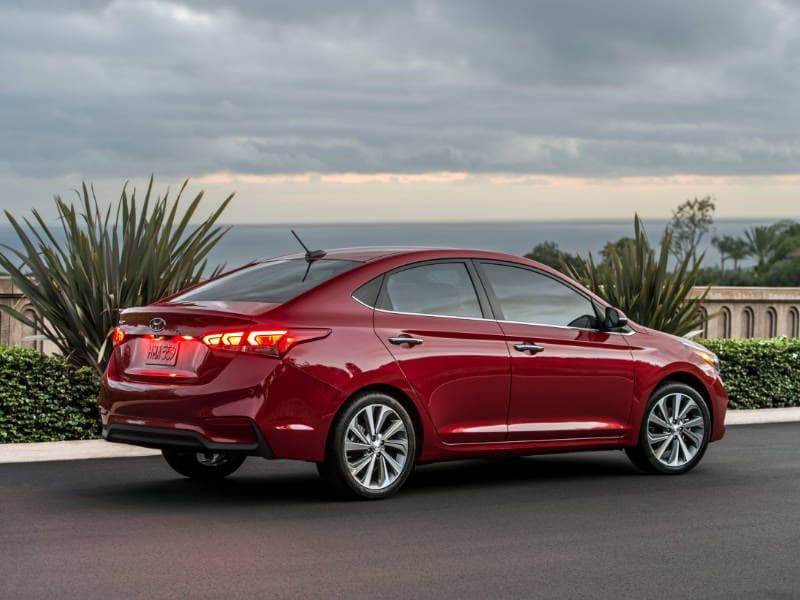
Photo by Hyundai
7) It's got the same engine and transmissions, but a little less thrust.
Changes under the Accent’s hood are minimal. Displacement of the direct-injection 1.6-liter four-cylinder engine carries over, but its output — 130 horsepower, 119 pound-feet of torque — has diminished slightly from the previous generation’s 137 hp and 123 lb-ft. Hyundai continues to offer a six-speed manual transmission, but for 2018 Accent it’s available only in the base SE model. The mid-grade SEL and top-of-the-line Limited are equipped solely with a six-speed automatic. The 2018 Accent’s EPA fuel economy ratings are about the same as the previous generation's: 28 mpg city, 37 or 38 highway, depending on transmission.
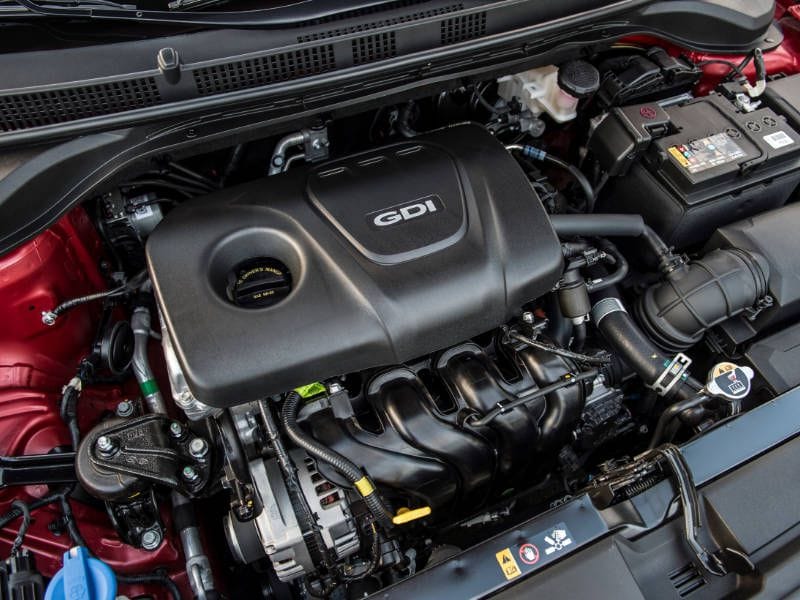
Photo by Hyundai
8) The Accent has adequate performance despite its reduced power.
Thanks to the increased percentage of high-strength steel in its structure, curb weights of the new and slightly larger Accent’s remain similar to those of the previous-generation sedan, from just over 2,500 pounds for an SE model with manual transmission to almost 2,700 pounds with the automatic. That’s not much mass, and even the reduced power of the 1.6-liter four handles it adequately.
However, do not confuse adequacy with stimulation. We’d expect 60-mph sprints in a little less than nine seconds with the automatic transmission, the only gearbox we experienced in the Nevada drive. The transmission shifts smoothly, and it responds well to orders from the driver’s right foot. But even so, acceleration is basically tepid overall.
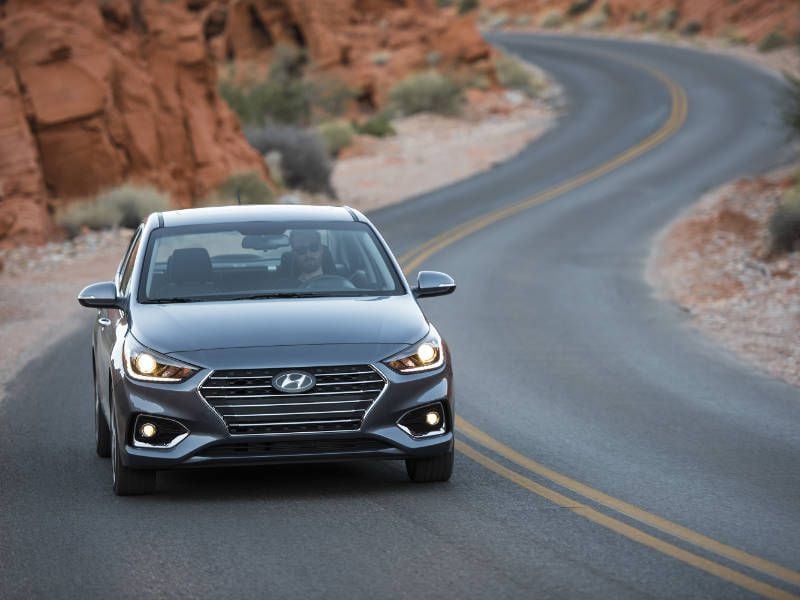
Photo by Hyundai
9) It's smooth and quiet.
Beyond the accommodating character of its automatic transmission, the Accent’s strongest dynamic strong suits are supple ride quality and accurate steering, with a higher level of tactility than many systems at this level. The Vegas-area test routes didn’t offer much opportunity to assess transient responses, but we’d rate its capabilities as so-so — competent, but far from eager. The connection between car and driver here, the fundamental element of fun-to-drive, is muffled. On the other hand, the comfort quotient is high, enhanced by exceptionally quiet operation for a subcompact car.

Photo by Hyundai
10) As usual, Hyundai introduces another strong value story.
Hyundai’s strong presence in the market is rooted in a solid quality story and an exceptional value proposition, traits that distinguish the Accent. There are three trim levels — SE, SEL, and Limited — and their base prices range from $14,995 to $18,895.
The basic SE includes essentials such as air conditioning, an AM/FM radio, a 5-inch touchscreen, cruise control, steering wheel auxiliary controls, a tilting (but not telescoping) steering column, remote keyless entry and a rearview camera. No one could call it loaded, but that's respectable by basic transportation standards. The higher trim levels add further comfort/convenience features — a bigger touchscreen, for example, and a power sunroof. Beyond that, the Accent sustains Hyundai’s exceptional warranty: five years/60,000 miles, 10 years/100,000 miles for the powertrain. We want our new cars to be trouble-free, but when they’re not, the next best thing is knowing that repairs and won’t come from our own pockets.
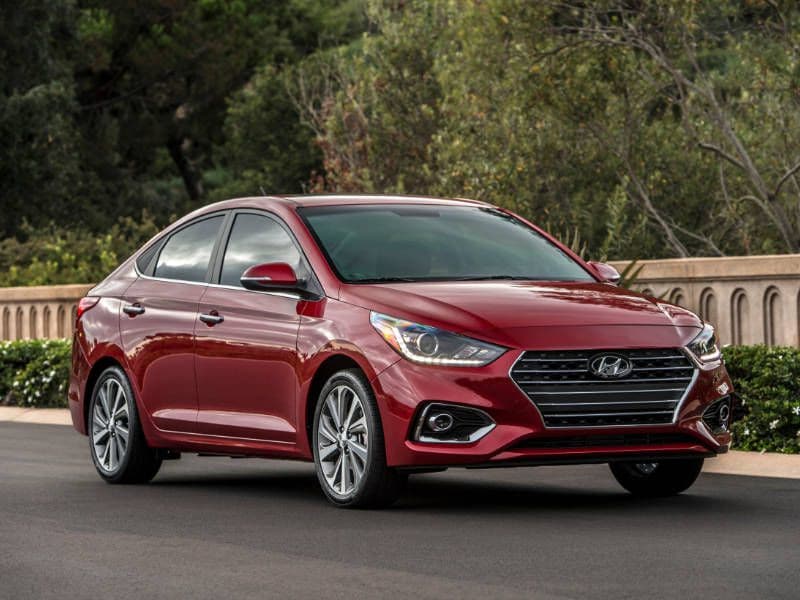
Photo by Hyundai